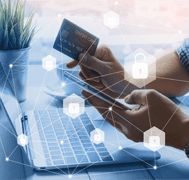 One the most immediate impacts of the pandemic was the augmented push towards electronic cash management. In June 2021, Visa polled 5,000 consumers in nine countries and found that nearly 70 per cent said COVID-19 has permanently changed how they pay for things and prefer touchless payment options.
One the most immediate impacts of the pandemic was the augmented push towards electronic cash management. In June 2021, Visa polled 5,000 consumers in nine countries and found that nearly 70 per cent said COVID-19 has permanently changed how they pay for things and prefer touchless payment options.
Early in the pandemic, digital payments were strongly encouraged as a safety precaution to reduce contact. As a result, in just eight weeks consumer and business digital adoption leapt five years forward. Perhaps a silver lining of the pandemic, digital payments are improving efficiency and accuracy across multiple sectors, such as logistics and retail.
Digital Invoicing
For example, before the pandemic, the logistics industry was heavily reliant on pen and paper. While nearly 70 per cent of consumer payments were made digitally, 64 per cent of B2B payments were done by check. The average B2B invoice cost $17 and took ten days to process and carried an 18 per cent error rate. The entire lifecycle of a B2B transaction averaged thirty-four days.
In this case, the move to electronic invoice delivery improved the process on both sides of the transaction. Reducing paper invoices, manual data entry, record storage, and touchpoints streamlines the process and cuts down human error. Because electronic invoice payment processes cost 60 per cent less on average than paper, setup costs related are soon recouped.
Payment Gateway Technology
Accommodating the push towards digital payments can be a challenge for smaller retailers and vendors, however there are scalable solutions.
For example, the Square Reader can attach to a user’s phone and be used to accept digital payments at locations like farmer’s markets or food trucks, making it ideal for vendors handling a lot of in-person transactions. Square’s revenue in 2020 jumped to over $9 billion from under $5 billion in 2019.
For e-commerce and web-based businesses, Stripe is a cloud-based payment platform that accepts major credit and debit cards as well as digital wallets. Stripe can integrate with existing e-commerce platforms such as Shopify, Wix, and Squarespace. Like Square, Stripe has seen a lot of growth during the pandemic, with its valuation growing from $36 billion in April 2020 to $94 billion in March 2021.
Self-Service
The more payment options vendors present customers, the faster and easier they’ll get paid. Self-service options such as self-checkout, online portals, kiosks, or mobile can save time for customers and vendors while reducing contact.
A recent report found that over 36 per cent of surveyed customers indicated a “major increase” in using self-checkout options, while another 23.5 per cent had minor increase.
However, over 67 per cent expressed frustrations over self-checkouts that didn’t work properly. Over a quarter of respondents said they avoid self-checkouts because of past negative experience, so it’s clear there’s still some work to be done here. A self-checkout solution isn’t viable if it doesn’t provide convenience and speed.
Self-service portals are also a must-have for online shopping. Seventy per cent of customers now expect a company’s website to include a self-service application. Many customers expect a response within four hours to their questions, which isn’t feasible for many companies to respond in-person. Applications like chatbots or a thorough FAQ page can go a long way in helping customers.
We have expertise in digital transformation services and provide leadership and guidance in finding the right technology for your business. Contact us at https://sheaglobal.com to find new efficiencies and opportunities in your business through digital payments options.